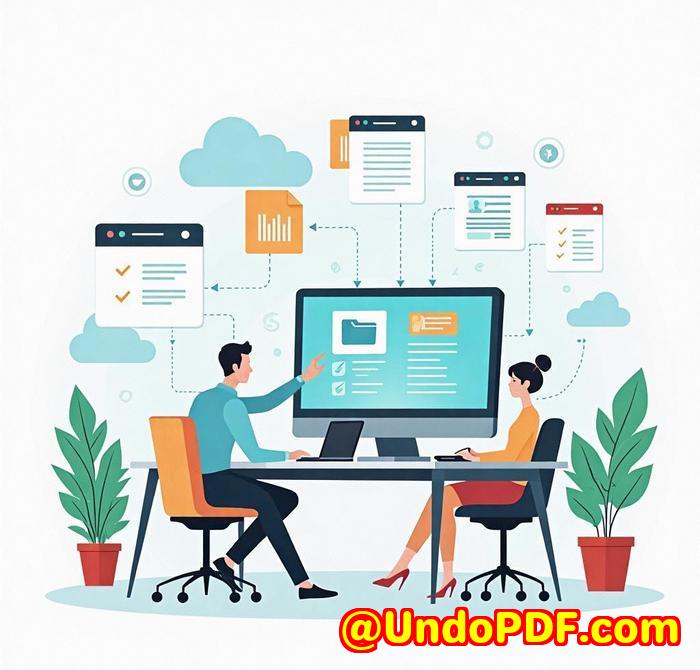Title
Convert PDF to Structured Data Tables in Excel with AI-Powered Layout Recognition
Meta Description
Easily convert complex PDF tables into structured Excel sheets using VeryPDF’s AI-based recognition and layout parsing tool.

Every time I received a new batch of quarterly financial statements from a client, I found myself spending hours manually retyping numbers from cluttered PDFs into Excel. Whether it was bank statements, inventory reports, or shipping logs, none of them followed the same formatand most were just scanned images. I tried a few free tools and even premium converters, but they often butchered the table layouts, misaligned the data, or ignored multi-page reports altogether.
Then I came across VeryPDF Software’s AI-based PDF to Excel converter, and it was like switching from chiseling stone to using a laser cutter.
I initially found VeryPDF while browsing for batch PDF conversion tools. What caught my attention was their emphasis on layout parsing and structured data extraction. This wasn’t just another PDF-to-Excel drag-and-drop tool; it actually “understood” the layout of the contentrows, columns, merged cells, headersand used artificial intelligence to rebuild that structure in Excel.
VeryPDF’s AI-powered tool is designed for professionals who need accurate, fast, and scalable conversion from PDF to Excel. That includes accountants, auditors, data analysts, logistics teams, researchers, and just about anyone who regularly works with tabular data buried inside PDFs.
Key Features That Made a Difference
1. AI-Based Layout Parsing
One thing I immediately noticed was how well the tool handled irregular tables. I imported a multi-page report with merged headers, footnotes, and column splitsand it still reconstructed a clean, structured table in Excel. Most other tools I tried either flattened everything into one row or left half the data out.
2. OCR Table Extraction from Scanned PDFs
About 30% of the documents I receive are scanned images. VeryPDF’s OCR engine (Optical Character Recognition) not only recognized the text but also accurately rebuilt table borders and rows. I had an old shipping manifest in low-res TIFF format, and the output Excel sheet was surprisingly usabledown to the serial numbers and quantity columns.
3. Batch Processing for Large Workloads
This was a game-changer for me. I can drag in 50 PDFs at once, and the tool churns out 50 clean Excel files in minutes. For a weekly reporting process, that’s saved me at least four hours per week. It’s particularly useful during tax season or audit prep when documents flood in all at once.
Why VeryPDF Stood Out
I’ve tried Adobe Acrobat’s export feature and a few Chrome extensions. While they’re okay for simple files, they don’t handle complex, non-standard layouts well. VeryPDF, on the other hand, seems built for messy, real-world documents. It doesn’t just extract contentit interprets it.
It also helps that the tool is cloud-based, so there’s no bulky software to install. I can run it on any machine, whether I’m in the office or working remotely.
To sum up, VeryPDF’s intelligent table extraction tool solves the real headache of dealing with non-uniform, hard-to-parse PDFs. Whether you’re a financial analyst compiling quarterly data, a legal assistant handling scanned contracts, or a procurement officer auditing vendor receipts, this tool turns a tedious process into a fast, reliable workflow.
Personally, I wouldn’t go back to manual entry or unreliable converters. I’d highly recommend this to anyone who deals with large volumes of PDF tables and needs structure, accuracy, and speed.
Start your free trial now and experience the difference:
Custom Development Services by VeryPDF
If your document processing needs go beyond table extraction, VeryPDF also offers fully customized software development. Their expertise spans multiple platformsWindows, Linux, macOS, mobile, and server-based environments. From printer job monitoring to OCR, barcode recognition, file conversion, API integration, and document security solutions (including DRM and digital signatures), VeryPDF can build tailored tools to match your exact requirements.
Their engineering team works with technologies like Python, JavaScript, C#, .NET, and more, and they specialize in building virtual printer drivers, API-level file interceptors, and advanced document layout analyzers. Whether you need a cloud-based batch processing tool or an embedded SDK, they’re equipped to deliver.
Have a project in mind? Visit http://support.verypdf.com/ to get in touch.
FAQ
1. Can VeryPDF extract tables from scanned PDFs?
Yes, it uses OCR (Optical Character Recognition) to convert scanned images into editable, structured Excel tables.
2. What types of PDFs work best with this tool?
Both native and scanned PDFs are supported. The tool performs exceptionally well with financial reports, forms, and invoices.
3. Does VeryPDF preserve merged cells and headers during conversion?
Absolutely. Its AI layout parsing accurately maintains merged cells, table headers, and complex formats.
4. Can I process multiple files at once?
Yes. Batch processing allows you to upload and convert dozens or even hundreds of files simultaneously.
5. Is any installation required?
No. VeryPDF offers a cloud-based interface, so you can access it from any browser without installation.
Tags / Keywords
-
PDF table extraction
-
convert PDF to structured Excel
-
OCR PDF to Excel
-
AI layout parsing tool
-
batch PDF conversion tool